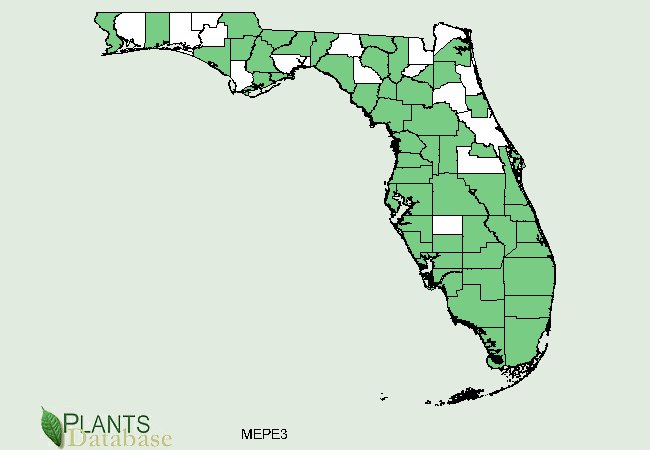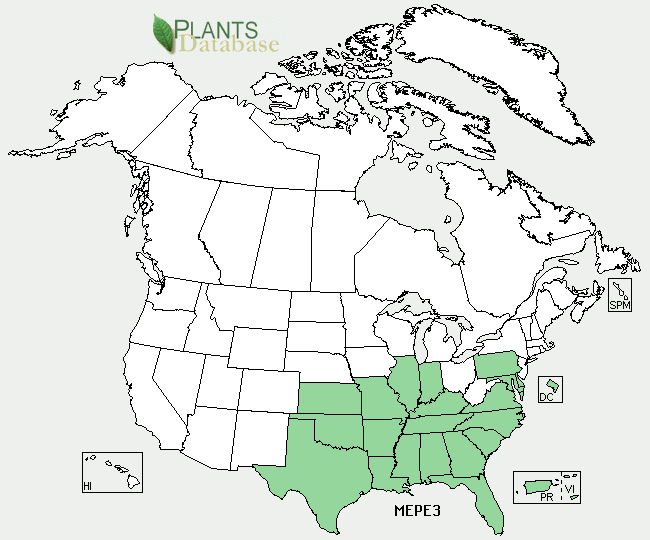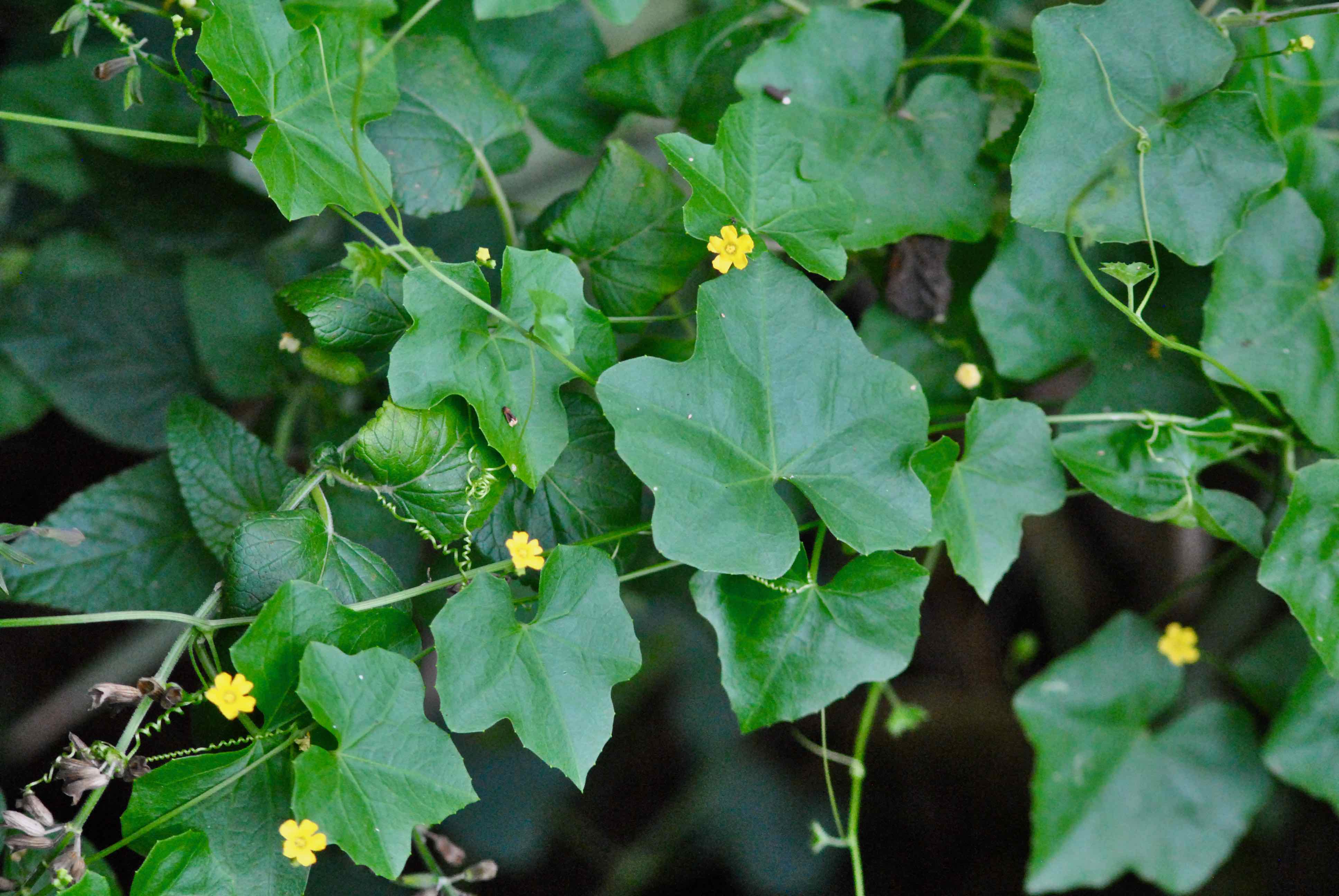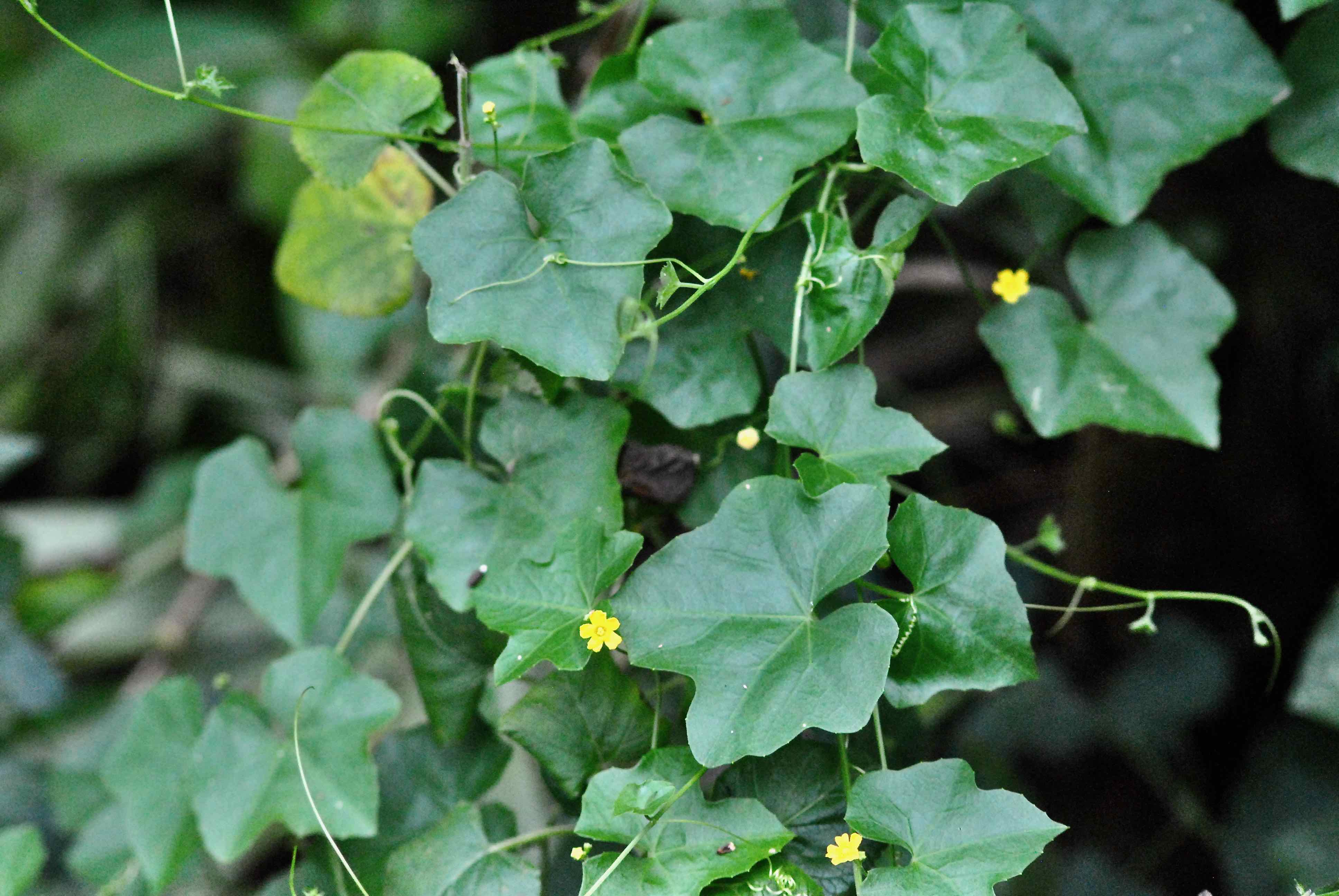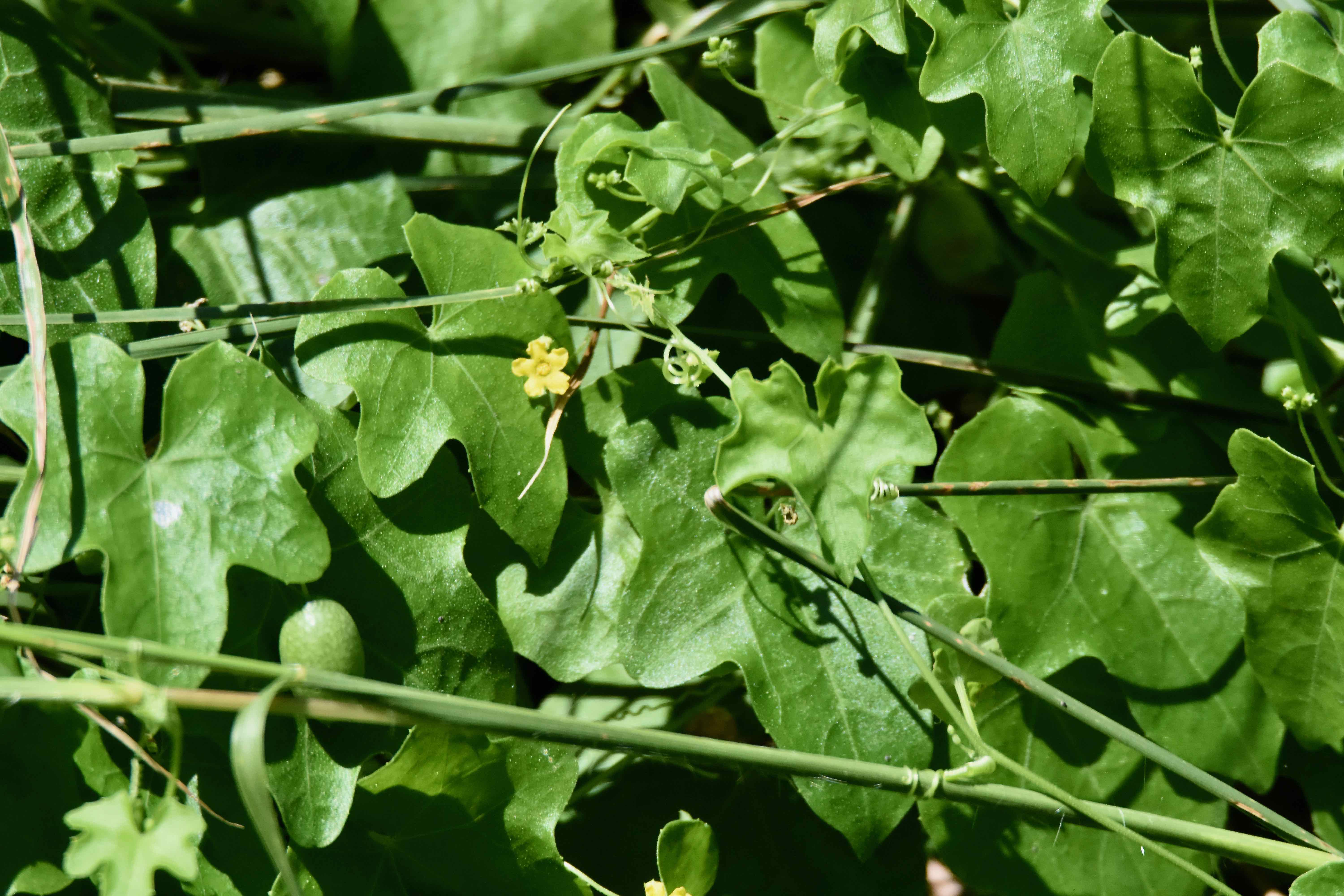
Creeping cucumber, photographed at Blowing Rocks Preserve, Jupiter Island, Martin County, in September 2018.
To eat or not to eat. That is the question with this small fruit-producing vine known as creeping cucumber. Some say its fruit is quite edible depending on when it's picked, others are convinced it's not regardless of timing. In any case, it's a Florida native found throughout the Sunshine State. Its range extends as far north as Pennsylvania and west into Kansas and Texas.
Scientifically, it's known as Melothria pendula, and goes by a variety of other common names, including Guadeloupe cucumber, meloncito, and speckled gourd. It produces green, watermelon-shaped fruit about the size of a jellybean. When ripe, the fruit turns black and looks rather like an olive. The resemblance with watermelon isn't a coincidence. This plant is part of the same family as both watermelon and cukes, Cucurbitaceae. But while watermelon and cucumbers are clearly good eats, the edibility of this guy is a subject to some question. North Carolina researchers consider it mildly toxic, giving victims a bad case of the runs. Others says it's no problem.
Both sides do agree that you definitely don't want to eat dark green or black fruit. According to the Eat the Weeds website, that's likely the source of the differing opinions about the fruit's toxicity. Creeping cucumber is fine if eaten when young and bright green, but not as it gets older, according to the website. Regardless, the taste and texture decline substantially as the fruit ages.
The plant itself is a perennial in Florida, a slender vine with leaves that have three to five lobes, and similar in appearance to its cultivated cousins. And like its cousins, it puts out tendrils that wrap around anything available that can give the plant support. Flowers are small, yellow, with five or six rounded petals. The fruit hangs from the plant like a pendulum. Pendula. It likes moist places.
In Florida, creeping cucumber is relatively abundant, but it is rare in other parts of its range. Indiana, for example considers it extinct within its borders. Illinois, which calls it squirting cucumber, lists it as threatened. Maryland lists it as endangered. Beyond the United States, creeping cucumber is native to the Caribbean, Mexico, Central America and South America to Argentina and Paraguay.
The Houma people of Louisiana used crushed creeping cucumber leaves to make a snake bite remedy. They would add gunpower, make a poultice and apply it to the wound.
University of Florida researchers are checking out whether there is a link between creeping cucumber and the squash vein yellowing virus that is attacking the state's watermelon crop. Florida is the leading producer of watermelons in the U.S., but the virus is plaguing growers. The theory is that creeping cucumber might be acting as a reservoir for the virus and transmitting it to the whiteflies that in turn infect watermelon plants.
Blowing Rocks Preserve
Click on photo for larger image
U.S. Department of Agriculture Distribution Maps
